Disney World is among the most ubiquitous theme park complexes ever. Home to four separate theme parks, it naturally has a myriad of rides, many well known and regarded by the general public. These will not be today’s subject however; rather, an often overlooked attraction known as Countdown to Extinction is the primary focus of today.
Located in Animal Kingdom’s Dinoland USA, I had first gone on this ride 7 years ago, and ever since, it lingered in my brain as a hair-raising, yet breathtaking experience. Precipitated by news of Dinoland’s imminent closing, I knew I needed to come back; to experience this ride one final time before it went the way of the dinosaur.
My excursion to Disney was not just to re-experience this ride however. Part of a school field trip, the plan was we would fly to Florida, perform at Disney World, and spend the rest of the trip going on the various rides the parks had to offer. To this point, my trip had been like a tumultuous asteroid field: the chaotic scramble to the area where we would perform at, the formation of my group itself, getting to each park, but this day would be better. My group was in Animal Kingdom after all, my favourite park. It was our 3rd day, and before we went to Hollywood Studios, my group had decided that our last ride in Animal Kingdom would be CTX. I was elated, to put it mildly.
After an eventful morning, my group had trekked to the southeastern area of the park, through Discovery Island. We came to a sign reading, “Dinoland U.S.A”, with a little semi circle above reading,” Exploration. Excavation. Exultation”, underneath a Brachiosaurus icon. I smiled slightly, reminiscing on my childhood obsession with dinosaurs.
~~~
Each area of a Disney park has accompanying lore to it, and this area is no exception. Set in the fictional American locale of Diggs county, Dinoland is an in-universe highway town established around a fossil site, akin to a roadside attraction. Although it is not based on a particular region of the world like the regions of Asia and Africa, the sub-area is consistent with Animal Kingdom’s theme of focusing on human-animal relationships. Since dinosaurs are extinct, the centuries old myths and cultural veneration many animals have accrued do not generally apply. Rather, dinosaurs have been historically restricted to the mediums of scientific literature, campy films, and commercial merchandise. This is the lens Dinoland USA uses to explore our cultural relationship with these extinct animals, and it is deliberately designed to be kitschy and tacky.

Image 1: a bench adorned with dinosaur symbols. Although relatively simple, it is rather representative of the area’s child-like whimsy.
This is immediately obvious once one walks into the park. On my right, I saw the punny “Trilo-Bites” (trilobites were an ancient family of extinct aquatic arthropods) snack place. I advanced further into the park, directly under a reddish bridge. Above us stood the partially complete fossil replica of a Brachiosaurus, neck craning into the sky, feet only partially excavated from the rocks below. It had a certain majesty to it, juxtaposed to the campy fun I had seen prior. I slowed, and marveled at the immense structure, smiling briefly before catching up with the rest of my group. I was on a mission after all. The sign read, “The BONEYARD:Fossil Fun Site. Established 1947”. It seemed to be painted in red on the shoulder bone of a large dinosaur. I remembered the boneyard fondly; it was a fossil themed playground, with fossil replicas embedded into the scenery. Unfortunately, we did not have time to explore it in depth, so I merely got a glimpse and continued onward. Determined to reach CTX once and for all, we marched towards the park’s interior.

Image 2: The sauropod replica. The sheer scale of the model stuck with me during my first trip to Dinoland, and it did not disappoint this time.
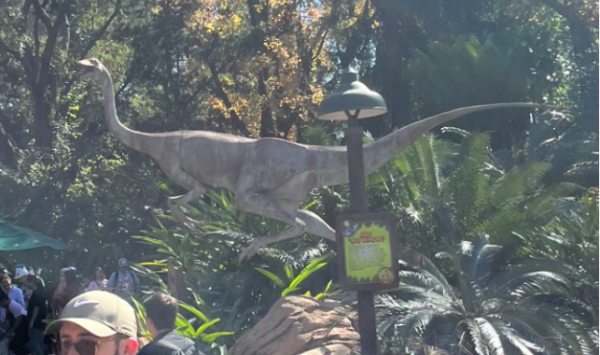
Image 3: A model of the ostrich like Ornithomimus. Models like these are scattered in Dinoland, some accompanied by “Did You Know?” signs, helping to show the more educational role dinosaurs occupy in the media.
~~~
Following a long, uneventful trek through a winding, shaded trail, we had reached a large building. Up ahead was a pillar, with some sort of sign posted on it. I strolled towards the pillar in order to read the sign. It said, “The Dino Institute presents: DINOSAUR- It’s Fast.Its A Blast.Its In The Past”, accompanied by a theropod being consumed by a volcanic explosion, jagged cracks of lightning in the dark sky. The aptness of the final line stung my mind like a pinpointed arrow, but the impact was dulled by our arrival.
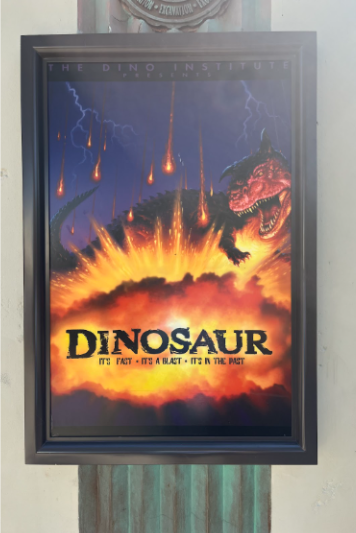
Image 4: The first glimpse of the Carnotaurus.
Outside of the main building itself and surrounded by water, was the statue of an Iguanodon, a large herbivorous dinosaur from the Cretaceous. A wave of nostalgia hit me, as I instantly realized that this was Aladar: the Iguanodon individual featured in CTX, and the main protagonist of the 2000 Disney film Dinosaur. Centering around Aladar’s trek for survival following a meteorite impact and the resulting appearance of 2 large theropods, Dinosaur was conceptualized in 1988 by Phil Tippet and Paul Verhoeven. Throughout its development history, the film underwent several key changes; for instance, it was originally going to be made in entirely stop motion with no dialogue. The plot would have differed dramatically as well, focusing on a Styracosaurus and its battle with a T. rex. The earlier drafts of the film tended to have a cataclysmic bent, being set in the immediate vicinity of the K-PG extinction event, a countdown to extinction even. This aspect is rather blatant in the ride, and reduced in the film. Peculiarly, the ride predates the film it is tied to. This is due to Michael Eisner (the CEO of Disney at the time) wanting the flagship ride of Dinoland to tie into a future movie project.
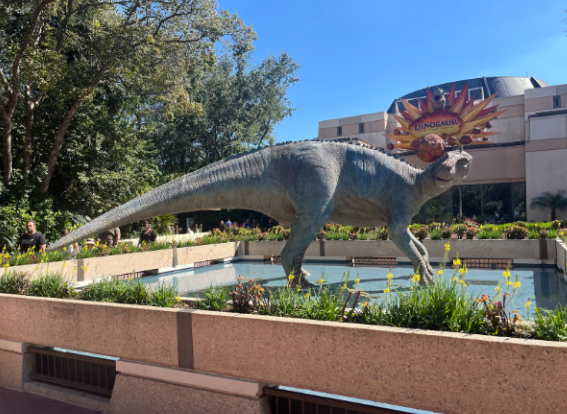
Image 5: The Aladar model. Curiously, the Aladar and CTX Iguanodon models differ from eachother quite dramatically.
All Disney rides have lines, and this one was long and meandering. Accompanying us in the waiting line were several statues, the most notable being a dromaeosaur, poised to pounce out of the vegetation, and the gaping maw of a tyrannosaur. Unusually, the wait was relatively short compared to the other rides we had gone on that day, and we were allowed indoors, a welcome refuge from the sweltering heat. The interior of the queue was themed after a museum, with various fossil replicas of small dinosaurs encased in glass. I walked further down the queue, towards the rotunda and the ride.
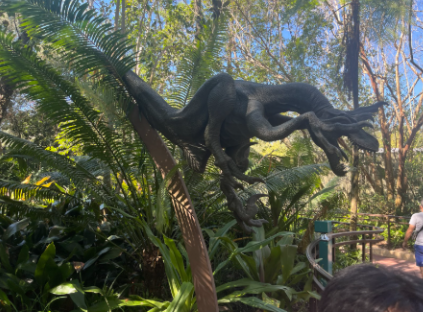
Image 6: A dromaeosaur statue. Although it was not accompanied by an informational sign, it is presumably Deinonychus given its size. At the time of its creation, feathers were not widely accepted to be present on dinosaurs, which is why it is scaly.
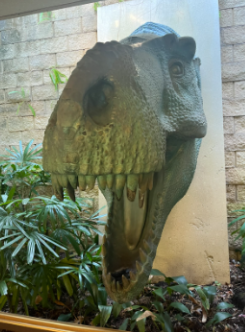
Image 7: The enormous tyrannosaur bust. During the 80’s and 90’s, portrayals of theropods with crocodile like faces were somewhat common, explaining why this depiction lacks lips altogether.
This section of the faux-museum featured a mix of open air and encased replicas, the latter tending to be elevated on the walls. As I glanced at them above, I noticed that the domed top of the exhibit had a variety of murals painted onto it, illustrating the primordial past. The star of the exhibit was, of course, the Carnotaurus itself, looming over the guests, enormous horns jutting out from the top of its skull. In sharp contrast, its small, four-fingered arms hung limply from its torso. Another memory flashed before my eyes, back when I was a child. Oh how it roared with the sound of thunder! Oh how the volcanic vents fumed with its fury! Oh how I felt a jolt of fear as it barreled after the car! As I recalled these experiences, I overheard a child shrieking excitedly at the enormous monster.
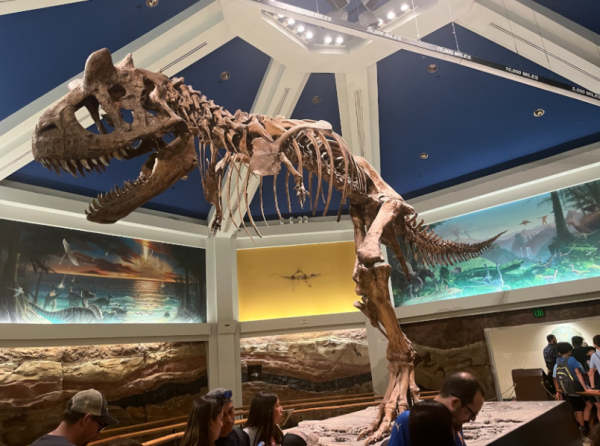
Image 8: The star of the show itself: Carnotaurus. Unlike the real life Carnotaurus, the faux-replica is identified as “Carnotaurus robustus floridiana”. Perhaps a reference to how dramatically it differs from its real life counterpart?
~~~
Discovered in Argentina during 1984, Carnotaurus sastrei is an abelisaur; a family of theropods found in the southern continents during the late Mesozoic; known for their atrophied arms and impressive cranial ornamentation. Although some abelisaurs did approach the size of theropods like T.rex, Carnotaurus did not, only being about 7.5-8 meters long, and 1-2 tons. Chosen over T.rex to be the primary antagonist of the film and ride due to its horns and relative obscurity at the time, its heavy stylization in these mediums was not only a narrative choice, but also a practical one; the mechanics supporting the massive animatronics in the ride allowed for robust dinosaur models, a sharp contrast to the slender, weasel-like build of Carnotaurus.
~~~
While CTX is a tonal departure from the rest of Dinoland, it also highlights the other, more educational side of dinosaurs. The gateways to various scientific concepts (biology, evolution, extinction, etc), dinosaurs are the epitome to what the world feels to a kid: big due to adaptations to immense size, wonderful due to their sheer diversity, and enigmatic due to their extinction. Further cemented by the background narration explaining about how the dinosaurs (fun fact: the narrator is voiced by Bill Nye) became extinct, I felt a warm rush of sentimental joy, an appreciation of the thought put into this, that the designers of this attraction really did want this experience to be more than just a ride. My exultation was poisoned by the knowledge that all of this time and effort would be made defunct, terminated merely for the chance of an increased profit.
To my right, a door opened, beckoning me to the pre-show room. Consequently, we were ushered into a dark room, the center of which possessed a large screen. Abruptly, the screen flickered to life in the pitch black, focusing on a brown logo of the Dino Institute, before transitioning to a dark room, mural of the Mesozoic faintly visible. Light shined on the room, revealing a person inside, who introduced herself as Dr. Marsh,. The director of the Dino Institute, she referred to the exhibits prior as antiquated, then introducing the time rover, a car able to time travel to the age of the dinosaurs.
The screen cut to a brownish dinosaur hand puppet, which greeted the audience. The screen zoomed out to reveal a man in a white lab coat, holding a smaller screen. Introducing himself as Dr. Seeker, he postulated that if the time rover can transport the audience to the Cretaceous and back, surely he can bring back a dinosaur too. Tapping the screen, the smaller screen turned on to reveal an Iguanodon. Mentioning how he had tagged the dinosaur prior, he reasoned that the dinosaur was located at the very end of the Cretaceous, our destination. At that moment, a voice interjected out of frame: it was Dr. Marsh. Reprimanding Dr. Seeker for his attempt to take us to the mass extinction event, she stated that the tour was intended to take us to the Early Cretaceous, with all time rovers having securely locked time coordinates. Nervously, Dr. Seeker seemingly concurred, and began to briefly explain the safety guidelines as Dr. Marsh left the room.
Subsequently, he unlocked the coordinates, reassuring the audience that, “You’ll be in and out of there before it[the asteroid] even breaks the atmosphere. Trust me—what could go wrong?”. The screen briefly went static, before settling on the same logo as the beginning, albeit green. Dr. Seeker interrupted one final time, imploring the audience that this is a secret operation, before the video ended. Promptly, the doors of the room opened, revealing a long corridor leading to a sign, which stated,“Underground research facility”. Following the sign, the pathway terminated in a large room containing a set of stairs and the ride itself.
Going down the stairs and towards the rovers, we swiftly reached the time rover. It had 3 rows of brownish seats, which my group wholly filled. Seatbelts securely locked in place, and mind ready for one final showdown, the rover began to lurch forward, out of the time chamber and into the dark ahead.
~~~
Officially called the CTX time rover, the vehicle is a surprisingly complex piece of technology. Operated by computer based actuators, the Enhanced Motion Vehicle(EMV). In conjunction with the position of the car on the track, the motion apparatus allows for the execution of a distinct sequence of movement patterns, not only enhancing the riding experience for passengers, but creating the feeling of a realistic ride experience without the risk of danger. This system has also been used for Disneyland’s Temple of the Forbidden Eye.
~~~
As the mist, that green, almost arcane mist from my childhood shrouded the car, it was as if I had returned into the bygone past of my own psyche. In the blackness, the shrill snarl of some creature pierced the ambience. We were truly in the age of reptiles.
We entered a world in its twilight hours, periodically flaring orange and blue, akin to a flame. At the periphery of my vision, I saw a large brown animal roughly the size and shape of a rhino. The automated voice identified it as, “Styracosaurus”, clearly not our dinosaur. Its beaked head twitched, as if perplexed by the car’s presence, large frill adorned with spikes that curved every which way. The car beeped, as the voice said,“Warning: Meteor shower in range”.
The vehicle continued forward, as I saw a large bipedal dinosaur to my left. It seemed to be light brown, with a darker stripe running down its back. It had a heavy tail, with strong hindlimbs and relatively small arms. It seemed to be consuming some green creature in its long jaws, faintly glowing in the amber light. I recognized this dinosaur from my youth; it was Alioramus, a smaller relative to theropods like T.rex. It ignored us, and as the rover cruised through the misty gloom, I saw a large, crested hadrosaur, presumably Parasaurolophus. Not our dino. To my right, I caught a glimpse of a raptor stood perched, contemptuous form enrobed in a harsh red glow. Not our dino. The scientist yelled, “Time to get serious. Locking autopilot on homing signal-NOW! HANG ON!”. The car began to whirl wildly towards the flashing darkness ahead, air jetting around the car and its passengers. The computer had apparently detected a large dinosaur ahead, as the scientist ordered the computer to stop the rover. Could this be our dino?
A great shape emerged from the darkness. It was reddish brown, with yellowish eyes that glared coldly at the rover. Crowned with a pair of horns directly above its eyes, it was lined with small, knobby scales, and its small, oddly pathetic arms flailed wildly as it snarled at the car. It was the Carnotaurus. Definitely not our dino.
Even with its various inaccuracies, the animatronic was well made nonetheless. Even in the mostly dark jungle, I observed its infernal red colouration, the rows of knobby scales lining its body, and the subtle expanding of its throat as its jaw opened. Just as suddenly as it appeared, the darkness cloaked it again, and the rushing howl of the gale resumed.
~~~
CTX’s dinosaurs are brought to life through audio-animatronics, among the largest Disney has ever created. On a scale never before seen, all of the animatronics in the ride are synchronized with pre-recorded audio, controlled by enormous computers. Movement is made possible by a complex series of hydraulics in the models themselves, which require 3,000 psi(pounds per square inch) in order to move. In conjunction with texturing and lighting effects, this creates a remarkably atmospheric experience while breathing life back into these reptiles in accordance with contemporary scientific knowledge.
~~~
Up ahead, I could see some sort of large creature, yellow underside faintly glowing. It seemed to be a Saltasaurus, a sauropod from the late Cretaceous. Its long neck was lined with small scales, and it emitted a guttural bellow as we passed it. The car beeped again, as the voice said, “Asteroid impact in 90 seconds”.
Overhead, a pterosaur shrieked, toothy jaws illuminated by a pale yellow light. Likely Caeradactylus due to its teeth and short tail, the pterosaur used to be able to “swoop” at the audience via a mechanical arm on the ceiling. Nowadays, it stays fixed, perpetually hovering in place. The car beeped again as the voice said, “Asteroid impact in 60 seconds”. The sands of time were blowing against us.
Above us, a large screen showed a swarm of Compsognathus(a genus of small theropods from Europe) leaping over a fallen log. Originally, they were wire controlled puppets that leapt over the passenger’s heads, but this replaced in favor for a screen.
The car began to lose traction in the mud, and standing motionless in the foliage was the carnotaur, flickering light betraying its position. Flaring to life, it rushed at the machine with jaws agape. The car swerved, beeping again as the voice said, “Warning:Meteor strike.”, rover dodging and weaving through the forest. It seemed as if we had eluded the dinosaur, until the car began to slow. Something big was ahead, and beeping again, the voice tonelessly said, “Carnotaurus”.
Illuminated by a haze of red, the dinosaur reared up high, and roared. Its bellow was laced with mournful notes, as if lamenting its doomed fate. The rover blasted through the path, passing a large brownish dinosaur, underside glowing with a faint orange. It was an Iguanodon: our dinosaur, but it was too late.
Ducking under a fallen tree trunk, we reached the final stretch of our tour. This was it. The car reached a breakneck pace, as the voice calmly said, “Asteroid impact”. The area ahead flickered with blue and orange light, revealing the carnotaur ahead. An endling tyrant of a dying world, it lunged one final time at us, wail dying in the dark as the rover charged back into the tunnel of stars and the chamber of time. Our ride smoothly came to a halt, as Dr. Seeker exclaimed, “You did it! I knew you would! And guess who made it back with you?” It was the Iguanodon, somehow.
“I better find him before security does, thanks for everything!!” added Dr. Seeker, synth serenely playing in the background.
The ride was over. I had conquered my fear, and yet, a strange sadness, a preemptive mourning of this area’s imminent doom flooded over me.
~~~
We walked to the gift shop, and following some idle scanning, my eyes were drawn to a large mural. A requiem composed of paint, it read “EXTINCTION” in faded brown, and showcased life from Earth’s antiquity. As I scanned the painting, I noticed a detail that I had somehow overlooked; at the end of the mural, stood the cut off outlines of living, endangered animals. Much like the dinosaurs, this land would become extinct, but it was happening in the present, before my very eyes. As this realization struck me like a meteor, one final phrase rang in my mind: no species lasts forever.

Image 9: Countdown to Extinction(2025). Carnotaurus sastrei witnesses the beginning of the apocalypse that spelled the end of the age of reptiles. Although Carnotaurus might have already gone extinct by the time the K-PG asteroid hit the earth, the general idea was too compelling to pass up.
